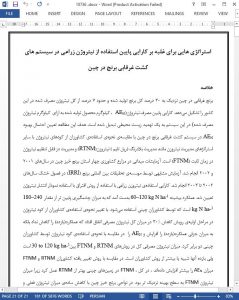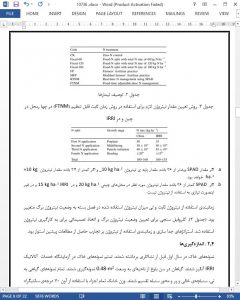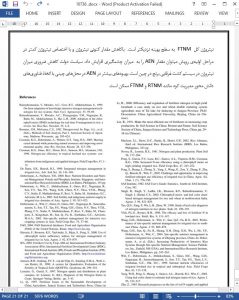Abstract
Irrigated rice in China accounts for nearly 30% of global rice production and about 7% of global nitrogen (N) consumption. The low agronomic N use efficiency (AEN, kg grain yield increase per kg N applied) of this system has become a threat to the environment. The objective of this study was to determine the possibility to improve the AEN of irrigated rice in China by comparing the farmers’ N-fertilizer practices with other N management strategies such as real-time N management (RTNM) and fixed-time adjustable-dose N management (FTNM). Field experiments were conducted in farmers’ fields in four major rice-growing provinces in China in 2001 and 2002. The same experiment was repeated at the International Rice Research Institute (IRRI) farm in the dry seasons of 2002 and 2003. Agronomic N use efficiency was determined by the “difference method” using an N-omission plot. Maximum yield was achieved mostly at 60–120 kg N ha−1, which was significantly lower than the 180–240 kg N ha−1 applied in farmers’ practices at the Chinese sites. With the modified farmers’ fertilizer practice, a 30% reduction in total N rate during the early vegetative stage did not reduce yield but slightly increased yield and doubled AEN compared with the farmers’ practice at the Chinese sites. The total N rate in RTNM and FTNM ranged from 30 to 120 kg ha−1 at the Chinese sites, but their yields were similar to or higher than that of the farmers’ practice. Compared with the modified farmers’ practice, RTNM and FTNM further increased AEN at the Chinese sites. Overall, FTNM performed better than RTNM at the Chinese sites because the total N rate of FTNM was closer to the optimal level than RTNM. A quantum leap in AEN is possible in the intensive rice-growing areas in China by simply reducing the current N rate and by allocating less N at the early vegetative stage.
1. Introduction
China is currently the world’s largest consumer of nitrogen (N) fertilizers. In 2002, annual N fertilizer consumption in China was 25.4 million metric tons or 30% of the global N consumption (FAO, 2004). About a quarter of this N was used for rice production in China based on statistics of 1997 (IFA, 2002); therefore, irrigated rice in China accounts for about 7% of global N consumption. China accounts for 30% of global rice production (FAO, 2004). The irrigated system produces over 95% of the rice in China (Maclean et al., 2002).
5. Summary
The high input rate of fertilizer N and improper timing of N application in farmers’ N-fertilizer management resulted in low AEN of irrigated rice in China. The low AEN of farmers’ N-fertilizer practices at the Chinese sites was associated with poor IEN and not with REN. There was a higher indigenous N supply capacity at the Chinese sites than at IRRI, but this was not considered by the rice farmers in determining total N rate for their rice crop. At the optimal total N rate, IEN, REN, and AEN at the Chinese sites were comparable with those of the IRRI site. Therefore, there is no intrinsic barrier to achieving high AEN in irrigated rice in China. Overall, FTNM outperformed RTNM at the Chinese sites because the total N rate of FTNM was closer to the optimal level than that of RTNM. A quantum leap in AEN is possible in irrigated rice at the study sites in China by simply reducing the current N rate and by allocating less N at the early vegetative stage. Government policy intervention is necessary to reduce the total N rate of irrigated rice in China. The extension service will be crucial to help farmers improve the timing of N application. Further improvement in AEN will be possible at the Chinese sites by adopting knowledge-intensive technologies of fertilizer management such as RTNM and FTNM.











